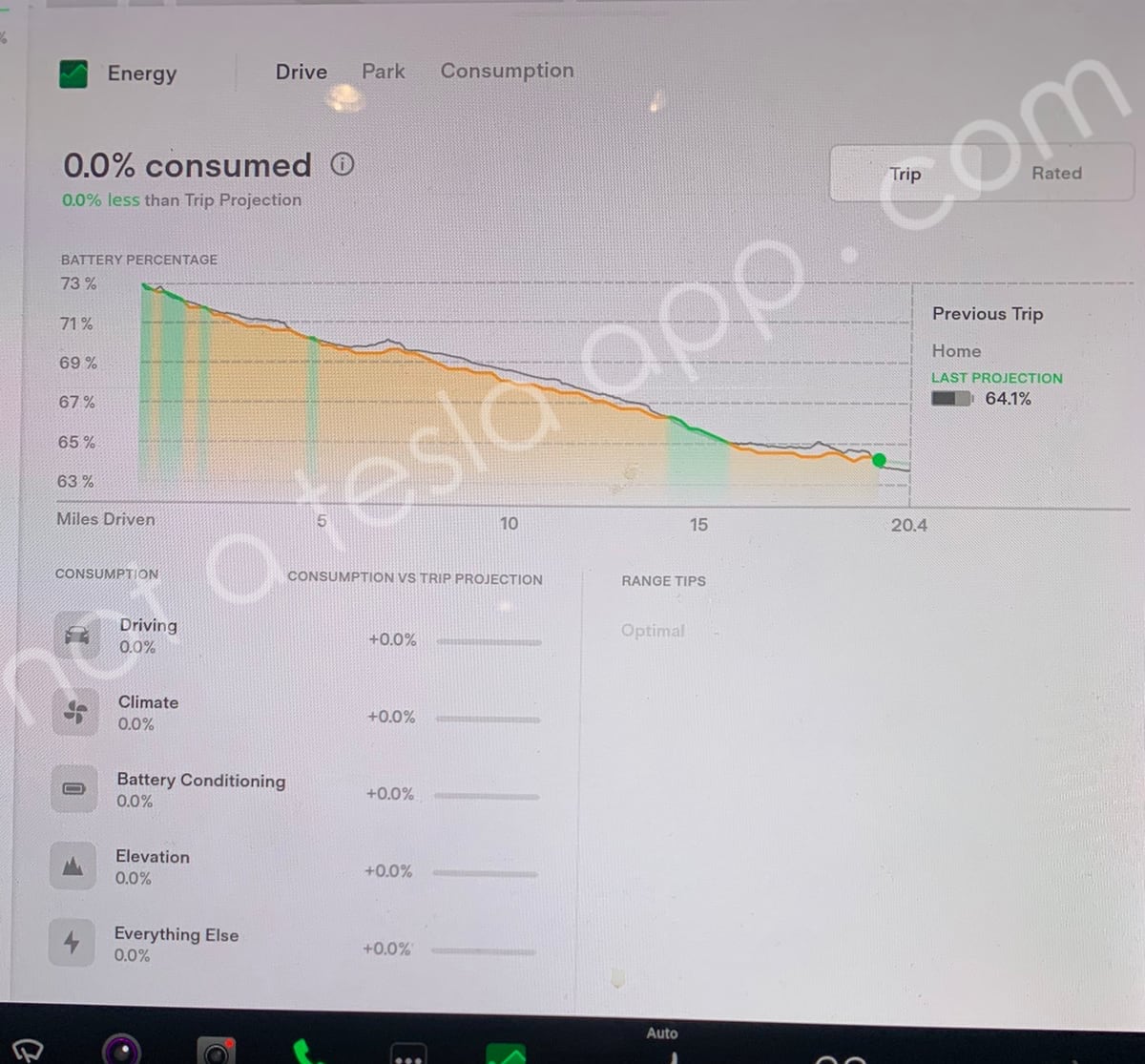The model Y 75 KW battery allows you roughly 300 miles of travel. So 100 miles requires about 25 KW of energy. One mile requires 75000/300 = 250 watts.
Oh, well. Time for the pendant and grammar idiot to show up.
There's No Such Thing as a 75 kW battery. Technical term error.
First: ENERGY is a QUANTITY. Literally, like a gallon of water in a bucket.
There are lots of different measures for energy, just like there's lots of different ways to measure the volume, or weight, or whatever of matter.
The SI unit for energy is the Joule.
Second: Power is a RATE OF USE OF ENERGY. At a steady rate, one Watt of power is the usage of one Joule per second. Like a water hose output is measured in gallons per minute, a Watt is measured in Joules per Second. The instantaneous power is W = J/s.
Suppose, for example, one uses One Million Watts for One Microsecond, then stops. (RADARs do things like this, no joke.) Over one second's time, you get an energy usage of 1e6 J/s * 1e-6 s = 1 Joule. Which is the same as using one watt for one second.
That 100W light bulb lighting your desk at the moment? Yes, it's using 100 Joules per second.
Third: So what the heck is a kW-hr, anyway? Well, just like people don't like shoveling zillions of pennies around when paying for groceries, humans like chunks that they can count on with their fingers. So, a Watt-hour is one Watt for an hour; there's 3,600 seconds in a hour (60 * 60), so 1 Watt-hour = 3.6 kJ.
The power company likes to charge people for energy (not power!) in chunks of kW-hours. Since a kW is one thousands times bigger than a Watt, that means that 1 kW-hr = 3.6 MJ. And there you are.
The batteries in the M3 LR and MY can hold about 75 kW-hr of energy when new. The published energy usage per mile for my M3 LR is 250 W-hr per mile. So, the range of my M3 is 75 kW-hr/(250 W-hr/mile) = 300 miles.
And, just so we're clear on all this: That 250W-hr/mile rating is pretty much like the MPG (Or, rather, sticking with units, the Miles/Gallon) rating on ICE cars. You do jackrabbit starts and stops and run at high rates of speed your W-hr/mile rating is going to get worse (higher numbers). For what it's worth, that 250 W-hr/mile number on my car was derived from exactly the same EPA testing that ICE vehicles go through, city, highway, and all. (Done at a lab in Detroit, if memory serves.)
So: Put 100 miles on my car? Energy stuffed into the battery is 100 miles * 250 W-hr/mile = 25 kW-hr. (= 90 MJ) Easy peasy.
Finally, just so all this makes economic sense. Ye Power Company goes out and buys a kg of coal from a mining company somewhere. Each kg of coal, when burned to CO2, gives off 29.3 MJ of energy. That usually heats up a bunch of water, boiling it, which is then used to spin a turbine which then spins a generator, generating electrical energy. Electric power companies go beserk making the process as efficient as possible, so something like 90% of the energy given off by that burning, some 26.4 MJ, is actually converted to electrical energy. (This is, by the way, a heck of a lot better than an ICE car's gasoline motor, which is about 30% or less efficient at turning the energy released by burning gasoline into kinetic energy.)
What electrical energy (in kW-hrs!) that goes into your abode spins the electric meter. The more you use, the more you pay, and what you pay is, in part, used to buy more coal. And to maintain and run the power generating and distribution network, as well as the salaries of all those involved.
I'm sure you all know this, but the reason that it's so much cheaper to run an electric car around the landscape is that electric vehicles are a heck of a lot more efficient at converting energy into kinetic energy; something like 70% or 80%, I believe, and that includes losses in the batteries and all.
And now you know.
</pundit-mode>



